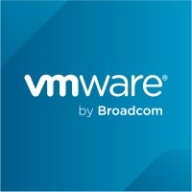

Spring Cloud Data Flow and Apache Flink both compete in the data processing and streaming sector. Apache Flink often takes the lead in complex data tasks due to its scalable stream processing features.
Features: Spring Cloud Data Flow specializes in orchestrating stream and batch pipelines with pre-built apps and enhances developer productivity. Apache Flink provides high throughput, low latency, and stateful processing, making it suitable for real-time analytics.
Room for Improvement: Spring Cloud Data Flow could improve its real-time processing capabilities and scalability to handle complex data tasks better. It also needs to enhance state management and scalability for demanding data environments. Apache Flink could benefit from simpler cloud integrations and user-friendly interfaces. It might also enhance automatic failover capabilities, offering more refined deployment options.
Ease of Deployment and Customer Service: Spring Cloud Data Flow offers straightforward deployment in cloud environments with strong community resources. It is user-friendly and provides excellent customer support. Apache Flink, though requiring more advanced setup, offers considerable configurability for large-scale use, with significant flexibility in deployment.
Pricing and ROI: Spring Cloud Data Flow often incurs lower initial costs and offers quick time to value, aimed at cost-conscious organizations. Apache Flink, despite potential higher upfront investments, ensures significant ROI by efficiently managing large-scale data streams, offering long-term benefits for those investing in feature-rich solutions.
| Product | Market Share (%) |
|---|---|
| Apache Flink | 14.8% |
| Spring Cloud Data Flow | 4.6% |
| Other | 80.6% |


| Company Size | Count |
|---|---|
| Small Business | 5 |
| Midsize Enterprise | 3 |
| Large Enterprise | 11 |
| Company Size | Count |
|---|---|
| Small Business | 3 |
| Midsize Enterprise | 1 |
| Large Enterprise | 5 |
Apache Flink is an open-source batch and stream data processing engine. It can be used for batch, micro-batch, and real-time processing. Flink is a programming model that combines the benefits of batch processing and streaming analytics by providing a unified programming interface for both data sources, allowing users to write programs that seamlessly switch between the two modes. It can also be used for interactive queries.
Flink can be used as an alternative to MapReduce for executing iterative algorithms on large datasets in parallel. It was developed specifically for large to extremely large data sets that require complex iterative algorithms.
Flink is a fast and reliable framework developed in Java, Scala, and Python. It runs on the cluster that consists of data nodes and managers. It has a rich set of features that can be used out of the box in order to build sophisticated applications.
Flink has a robust API and is ready to be used with Hadoop, Cassandra, Hive, Impala, Kafka, MySQL/MariaDB, Neo4j, as well as any other NoSQL database.
Apache Flink Features
Apache Flink Benefits
Reviews from Real Users
Apache Flink stands out among its competitors for a number of reasons. Two major ones are its low latency and its user-friendly interface. PeerSpot users take note of the advantages of these features in their reviews:
The head of data and analytics at a computer software company notes, “The top feature of Apache Flink is its low latency for fast, real-time data. Another great feature is the real-time indicators and alerts which make a big difference when it comes to data processing and analysis.”
Ertugrul A., manager at a computer software company, writes, “It's usable and affordable. It is user-friendly and the reporting is good.”
Spring Cloud Data Flow is a toolkit for building data integration and real-time data processing pipelines.
Pipelines consist of Spring Boot apps, built using the Spring Cloud Stream or Spring Cloud Task microservice frameworks. This makes Spring Cloud Data Flow suitable for a range of data processing use cases, from import/export to event streaming and predictive analytics. Use Spring Cloud Data Flow to connect your Enterprise to the Internet of Anything—mobile devices, sensors, wearables, automobiles, and more.
We monitor all Streaming Analytics reviews to prevent fraudulent reviews and keep review quality high. We do not post reviews by company employees or direct competitors. We validate each review for authenticity via cross-reference with LinkedIn, and personal follow-up with the reviewer when necessary.